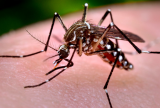ZIKA: Informational Resources for US-MX Border Residents
Mosquito-borne diseases pose a risk to public health. The Zika virus disease (Zika) is a disease primarily spread to people through a bite of an infected Aedes species mosquito (A. aegypti and A. albopictus). These same mosquitos can also spread dengue and chikunguya viruses. Many public health concerns have arisen due to the recent Zika Virus outbreaks and increases of reported and confirmed cases in the United States and US territories. As of to-date, the Zika infected cases reported in the United States primarily have been associated with people traveling to areas where Zika is prevalent. In contrast, in the US territories, Zika mainly has been locally acquired.
EPA, along with other Federal, state, local, and tribal partners, is taking proactive measures to prevent and minimize the number of Zika cases in the United States by sharing information with our stakeholders and community partners on vector-borne diseases and approaches for vector control including the use of repellent products. Many of these partners provide detailed information on Zika virus and other vector-borne diseases and information on reducing risks to vector exposure on their websites. The information includes vector control strategies such as integrated pest management, appropriate use of pesticides, protection against mosquitoes (in Spanish), and general prevention strategies.
Information links from the EPA, CDC, and the four US Border States’ (i.e., California, Arizona, New Mexico, and Texas) Departments of Health have been provided to give US-MS border residents the facts about Zika.

